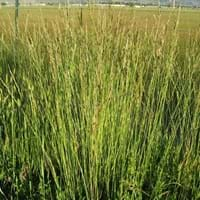Life Span
Biennial and Perennial
Perennial
Origin
Europe, Western Asia
Not Available
Types
Not Available
Alta fescue, Kentucky fescue
Number of Varieties
Not Available
Habitat
waste ground, wastelands
meadows, Well Drained, yards
USDA Hardiness Zone
4-9
5-8
Sunset Zone
A1, A2, A3, H1, H2, 1a, 1b, 2a, 2b, 3a, 3b, 4, 5, 6, 7, 8, 9, 10, 11, 12, 13, 14, 15, 16, 17, 18, 19, 20, 21, 22, 23, 24
A1, A2, A3, 1a, 1b, 2a, 2b, 3a, 3b, 4, 5, 6, 7, 8, 9, 10, 14, 15, 16, 17, 18, 19, 20, 21, 22, 23, 24
Habit
Rosette/Stemless
Clump-Forming
Minimum Width
Not Available
Flower Color
Yellow
Pale White
Flower Color Modifier
Bicolor
Bicolor
Fruit Color
Brown, Black
Not Available
Leaf Color in Spring
Green
Blue Green
Leaf Color in Summer
Green
Light Green
Leaf Color in Fall
Green
Blue Green
Leaf Color in Winter
Not Available
Green, Tan
Leaf Shape
Pinnate
Grass like
Plant Season
Summer
Spring, Fall
Sunlight
Full Sun
Full Sun, Partial Sun
Type of Soil
Loam
Clay, Loam
The pH of Soil
Neutral
Neutral, Alkaline
Soil Drainage
Well drained
Average
Bloom Time
Summer
Not Available
Tolerances
Drought
Not Available
Where to Plant?
Ground, Pot
Ground
How to Plant?
Seedlings
Seedlings, vegetative cuttings
Plant Maintenance
Medium
Medium
Watering Requirements
Average Water Needs, Do Not over Water, Keep the ground moist but not water-logged
Allow to dry out slightly between watering, Never Over-water
In Summer
Lots of watering
Lots of watering
In Spring
Moderate
Moderate
In Winter
Average Water
Average Water
Soil pH
Neutral
Neutral, Alkaline
Soil Type
Loam
Clay, Loam
Soil Drainage Capacity
Well drained
Average
Sun Exposure
Full Sun
Full Sun, Partial Sun
Pruning
Remove damaged leaves, Remove dead branches, Remove dead leaves
Prune after flowering, Prune for size control, Remove dead or diseased plant parts
Fertilizers
All-Purpose Liquid Fertilizer
All-Purpose Liquid Fertilizer
Pests and Diseases
Aphids, Armyworm, Cutworms, Downy mildew, Pitch canker, Red blotch
Brown patch, Gray leaf blight, Pythium blight, Rust, Zoysia patch
Plant Tolerance
Drought
Full Sun, Heat And Humidity
Flowers
Showy
Insignificant
Flower Petal Number
Not Available
Single
Fragrant Bark/Stem
Yes
No
Foliage Texture
Fine
Medium
Foliage Sheen
Matte
Matte
Attracts
Butterflies
Mealybugs, Mites
Allergy
Stomach burn
Skin rash, Vomiting, Watery eyes
Aesthetic Uses
Not Available
Ground Cover, Used in parkland
Beauty Benefits
Blood purifying, Good for skin
Not Available
Environmental Uses
Air purification
Fixes Nitrogen, Prevent Soil Erosion
Medicinal Uses
Aphrodisiac
Antispasmodic
Part of Plant Used
Root
Whole plant
Other Uses
Food for animals, Used as a nutritious food item
Animal Feed, Used as Ornamental plant
Used As Indoor Plant
Yes
No
Used As Outdoor Plant
Yes
Yes
Garden Design
Edible, Herb, Vegetable
Groundcover, Lawns and Turf
Botanical Name
PASTINACA sativa
Festuca arundinacea
Common Name
Parsnip
Tall Fescue
In Hindi
चुकंदर
tall fescue
In German
Pastinake
Rohr-Schwingel
In French
Panais
Festuca arundinacea
In Spanish
Chirivía
Festuca arundinacea
In Greek
Είδος δαυκίου
tall fescue
In Portuguese
cherivia
Festuca arundinacea
In Polish
Pasternak
Kostrzewa trzcinowa
In Latin
parsnip
tall fescue
Phylum
Magnoliophyta
Magnoliophyta
Class
Magnoliopsida
Liliopsida
Clade
Angiosperms, Asterids, Eudicots
Angiosperms, Commelinids, Monocots
Tribe
Not Available
Not Available
Subfamily
Not Available
Not Available
Number of Species
Not Available
Not Available
Season and Care of Parsnip and Tall Fescue
Season and care of Parsnip and Tall Fescue is important to know. While considering everything about Parsnip and Tall Fescue Care, growing season is an essential factor. Parsnip season is Summer and Tall Fescue season is Summer. The type of soil for Parsnip is Loam and for Tall Fescue is Clay, Loam while the PH of soil for Parsnip is Neutral and for Tall Fescue is Neutral, Alkaline.
Parsnip and Tall Fescue Physical Information
Parsnip and Tall Fescue physical information is very important for comparison. Parsnip height is 15.20 cm and width 7.60 cm whereas Tall Fescue height is 5.10 cm and width Not Available. The color specification of Parsnip and Tall Fescue are as follows:
Parsnip flower color: Yellow
Parsnip leaf color: Green
Tall Fescue flower color: Pale White
- Tall Fescue leaf color: Blue Green
Care of Parsnip and Tall Fescue
Care of Parsnip and Tall Fescue include pruning, fertilizers, watering etc. Parsnip pruning is done Remove damaged leaves, Remove dead branches and Remove dead leaves and Tall Fescue pruning is done Prune after flowering, Prune for size control and Remove dead or diseased plant parts. In summer Parsnip needs Lots of watering and in winter, it needs Average Water. Whereas, in summer Tall Fescue needs Lots of watering and in winter, it needs Average Water.





